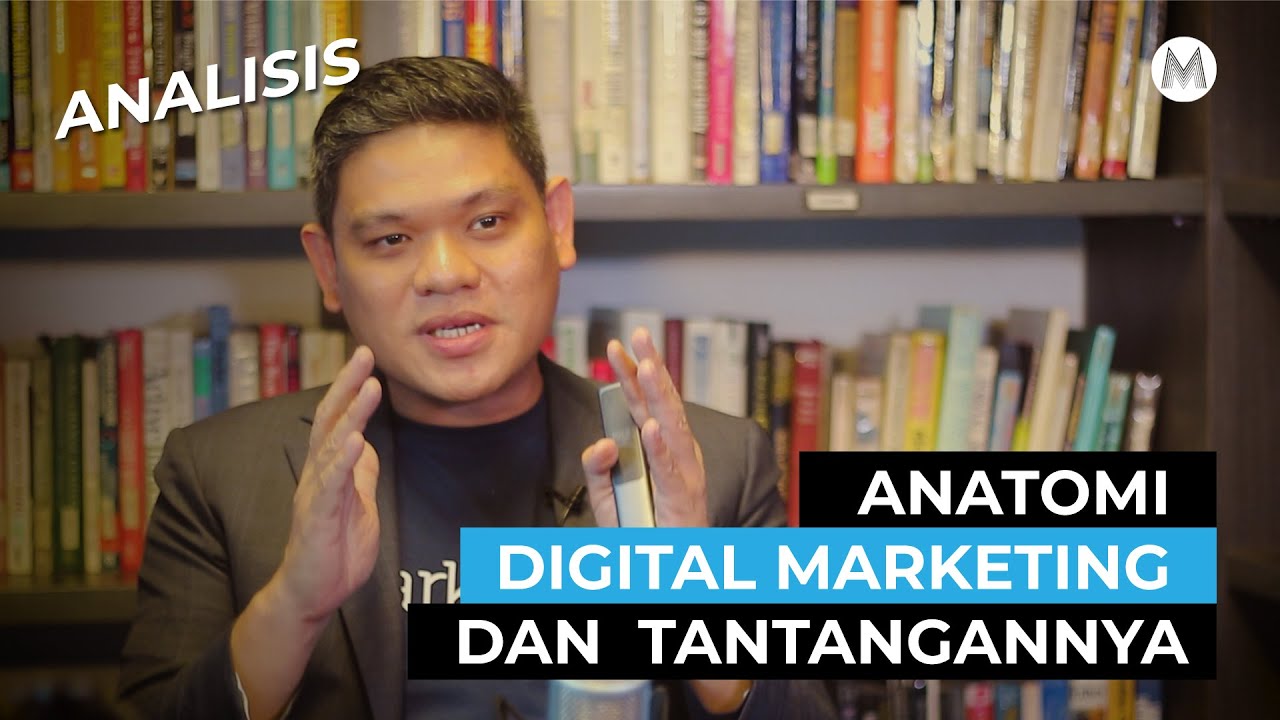Intergenerational Marketing | Oleh Penulis Marketing 4.0, 5.0, dan 6.0 - ANALISIS #63
Summary
TLDRIn this episode, Iwan Setiawan discusses intergenerational marketing, addressing the dilemma brands face in targeting different generations. He explores the influence of family dynamics and nostalgia cycles, highlighting how Gen X parents introduce pop culture to Gen Z, while Gen Z teaches tech-savvy habits. The discussion emphasizes the potential of intergenerational marketing strategies, illustrated by examples from Indonesian brands like Head and Shoulders and BCA. By finding common ground between generations, brands can engage a wider audience and effectively navigate the complexities of modern consumer behavior.
Takeaways
- 😀 Intergenerational marketing allows brands to target multiple generations simultaneously.
- 😀 The dilemma of generational targeting arises from the contrasting characteristics of older and younger generations.
- 😀 Older generations have higher buying power and loyalty, but lower lifetime value due to aging.
- 😀 Younger generations are more adaptable to technology and have longer potential lifetime value.
- 😀 Family influence plays a significant role in shaping purchasing behavior across generations.
- 😀 The nostalgia cycle suggests that trends recur every 20 to 30 years, connecting past and present.
- 😀 Brands can leverage family dynamics to create blended preferences in their marketing strategies.
- 😀 Successful intergenerational marketing examples include campaigns from Head and Shoulders, BCA, and Uniqlo.
- 😀 Nostalgic elements in marketing resonate with older generations while appealing to younger consumers as trendy.
- 😀 Understanding and utilizing generational linkages is key for effective marketing strategies.
Q & A
What is intergenerational marketing?
-Intergenerational marketing is an approach that targets multiple generations simultaneously, allowing brands to connect with both younger and older consumers effectively.
What dilemma do marketers face regarding generational targeting?
-Marketers often struggle to decide which generation to target, as younger generations may be trendy but lack purchasing power, while older generations have higher buying power but may be less digitally engaged.
What are the advantages of targeting older generations?
-Older generations typically have higher buying power, greater brand loyalty, and more disposable income, making them valuable consumers.
What are the disadvantages of targeting older generations?
-Older generations may have a shorter lifetime value as consumers, be slower to adopt new technologies, and may not engage as easily with digital channels.
What are the advantages of targeting younger generations?
-Younger generations often have a longer potential lifetime value as consumers, are early adopters of new technologies, and are more likely to embrace innovative products.
What are the disadvantages of targeting younger generations?
-Younger generations generally have less spending power and tend to switch brands frequently, making them less loyal compared to older consumers.
What two key factors help link different generations in intergenerational marketing?
-The two key factors are family influence, where behaviors and preferences are shared across generations, and the nostalgia cycle, where past trends resurface in contemporary culture.
How does family influence play a role in marketing?
-Family influence creates dynamics where older generations introduce cultural elements to younger generations, while younger generations often teach older family members about new technologies.
What is the nostalgia cycle, and how does it affect consumer trends?
-The nostalgia cycle suggests that trends resurface approximately every 20-30 years, allowing marketers to predict current interests based on past popular culture elements.
Can you provide an example of a brand utilizing intergenerational marketing?
-An example is BCA's campaign featuring Indro, a legendary comedian, which educates younger consumers about online fraud while leveraging nostalgia associated with his past performances.
Outlines

هذا القسم متوفر فقط للمشتركين. يرجى الترقية للوصول إلى هذه الميزة.
قم بالترقية الآنMindmap

هذا القسم متوفر فقط للمشتركين. يرجى الترقية للوصول إلى هذه الميزة.
قم بالترقية الآنKeywords

هذا القسم متوفر فقط للمشتركين. يرجى الترقية للوصول إلى هذه الميزة.
قم بالترقية الآنHighlights

هذا القسم متوفر فقط للمشتركين. يرجى الترقية للوصول إلى هذه الميزة.
قم بالترقية الآنTranscripts

هذا القسم متوفر فقط للمشتركين. يرجى الترقية للوصول إلى هذه الميزة.
قم بالترقية الآنتصفح المزيد من مقاطع الفيديو ذات الصلة

Pakai Digital Marketing Sudah Wajib, Pahami Komponennya - ANALISIS #1

Wajib Paham Content Marketing, Komunikasi Era Digital - ANALISIS #3

The Ultimate Marketing Move - Analisis #68

The Future of Marketing is Immersive - ANALISIS #54

Negative Marketing | Oleh Penulis Marketing 4.0, 5.0, dan 6.0 - ANALISIS #62

ANALISIS Special Edition Branding #2 | Managing Brand Equity
5.0 / 5 (0 votes)
